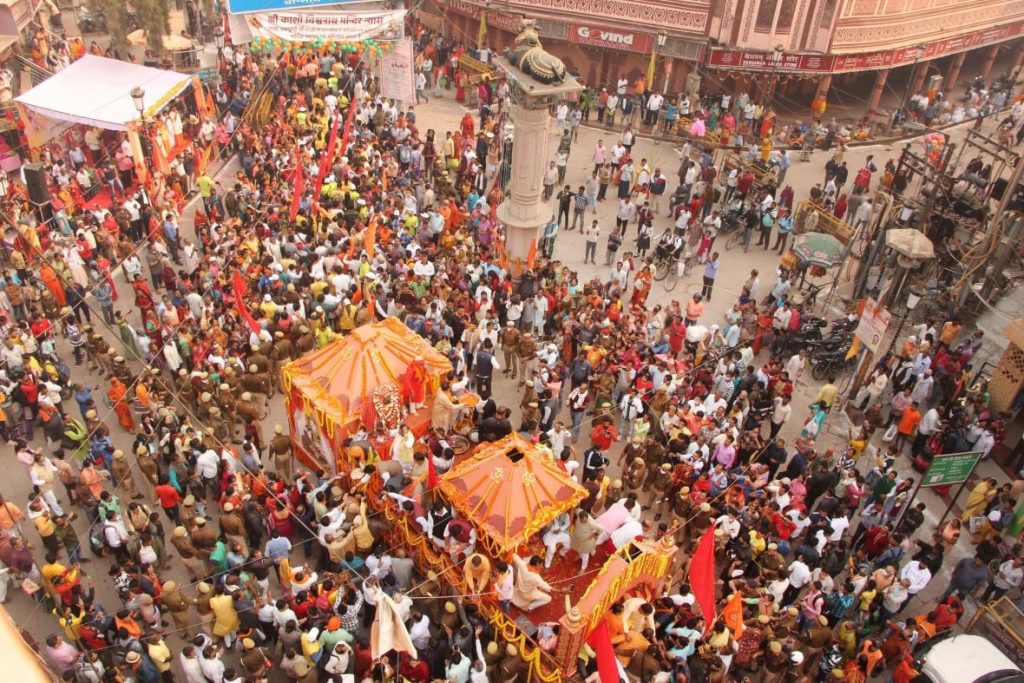
In 2020, the University of Regina returned an 18th century stone statue of the Hindu goddess Annapurna, found to have been stolen from a religious site in the city of Varanasi, India, in 1913. It was the discovery of Annapurna’s theft that prompted the development of the Collections Review Project.
Annapurna’s journey home began during a period of research by artist Divya Mehra in preparation for her exhibition, From India to Canada and Back to India (There is nothing I can possess which you cannot take away) (MacKenzie Art Gallery, August 7, 2020 – January 2, 2021). While studying the University’s collection at the MacKenzie (MAG), Mehra located the statue, at that time misidentified as a representation of the god Vishnu. Guessing that the sculpture was misidentified, further research revealed the circumstances under which it had been acquired by the donor and gallery namesake, Norman MacKenzie. MacKenzie’s original compendium of notes detailed his collecting trip through Asia in 1913. It was during a visit to Varanasi that the sculpture was stolen on MacKenzie’s behalf from a shrine on the banks of the river Ganges.
Dr. Siddhartha V. Shah (Curator of Indian and South Asian Art, Peabody Essex Museum), was able to identify the statue as Annapurna, the queen of the city of Varanasi. She holds a bowl of kheer (rice pudding) in one hand and a spoon in the other, items she is commonly associated with as the goddess of food. She is celebrated by her devotees as one who nourishes and strengthens the body through food, and the soul through enlightenment.
Prior to her return, Annapurna was part of the University of Regina’s collection stewarded by the MAG through a longstanding partnership dating back to the early 1950s. When Norman MacKenzie died in 1936, he left a gift of cultural importance to the University of Saskatchewan, Regina College (now the University of Regina). His bequest included 374 artworks – including Annapurna – and the funds to build a gallery. In 1953, the Norman MacKenzie Art Gallery (now the MacKenzie Art Gallery) opened as the University’s own art gallery and Saskatchewan’s first public gallery. The MAG continues to act as custodian for the University of Regina Collection, which includes the original Norman MacKenzie bequest.
In November 2020, Prime Minister Narendra Modi celebrated Annapurna’s return in a national address. The University of Regina’s Dr. Thomas Chase, Interim President and Vice-Chancellor, met with Mr. Ajay Bisaria, High Commissioner of India, over Zoom to officially repatriate the statue in a virtual ceremony that month. Divya Mehra and representatives from the MacKenzie Art Gallery, Global Affairs Canada, and Canada Border Services Agency also attended the ceremony. In December, a virtual community farewell event was held in Regina, before Annapurna finally began her journey home.
Facilitated by the High Commission of India, Annapurna travelled from Ottawa to New Delhi, then travelling on to Varanasi in where she was welcomed by crowds. Annapurna is now in the care of the Kashi Vishwanath Temple in Varanasi.
Read more about this story: